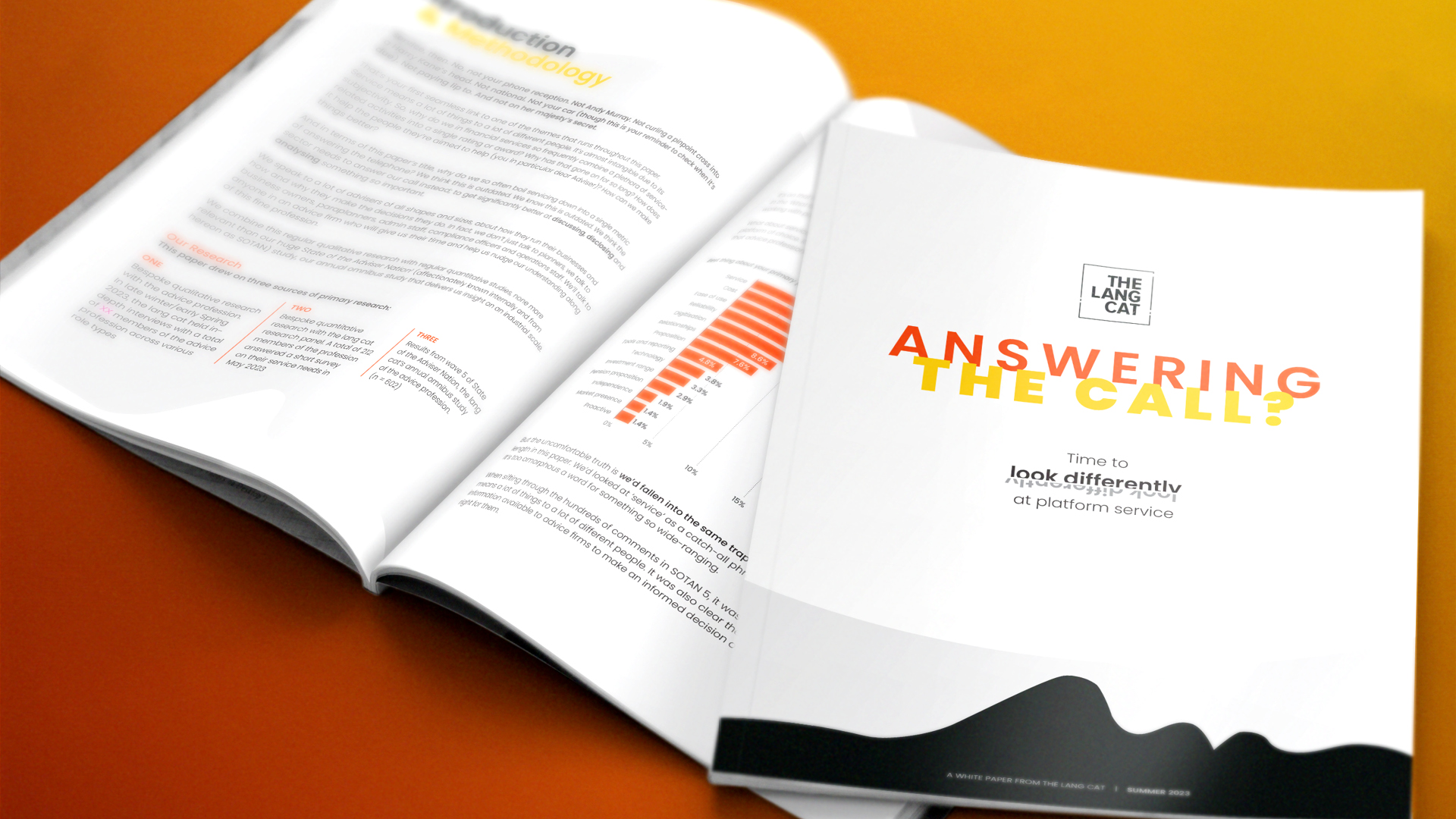There was SIMPLY NO WAY that I’d be able to let this go by.
What a day for Skandia, and what a triumph of news management. With UK inflows on SIS dropping 40% and a reminder in the analyst statements that only £20bn or so of the near £40bn it’s credited with having is on the platform (the rest is in the lifeco), this was a tough day in the making.
But by bundling news of its long-awaited unbundled pricing structure (ha, bundling, just got that) in with the bad news, everyone is going to head straight for the shiny new stuff and forget about the claggy year behind. Skandia has always been the master of prestidigitation, and this was a masterstroke.
My excuse is that pricing analysis is sort of my thing, so while I could make some trenchant comments about advisers being distracted by RDR and forgetting to write business on Skandia (“Dammit! I was going to write that £250k case, but got distracted by FG12/16! Oh, well, another time. Look, a badger…”), I won’t. Except that one.
So Skandia has pulled the covers off, and what lurks beneath them isn’t what I expected. Scratch that. It’s partly what I expected, but there are some twists and turns in there. The structure is a basic tiered one, running from 50bps down to 15bps as you get richer. There is no fixed platform charge – a big change since (I’m pretty sure) Skandia was the first to introduce that shape. What there is instead is a minimum charge, which comes out as £100pa (actually £99.96 or £8.33 a month). In effect, this catches sub- £20k portfolios (50bps of £20k = £100) and makes them pay their way.
A minimum charge – which I’m calling a collar – isn’t a popular shape right now, but it does make some kind of sense. It’s a nod towards the fixed charging structures of companies like Alliance Trust Savings, where everyone pays their own way. In this case, though, it’s mixed in with a basis points structure which has inherent cross-subsidy, so feels a little strange. Perhaps if they had a cap (a maximum charge) it might feel more intuitively right. But Skandia is saying that if it must deal with very small portfolios, it’ll make a decent turn out of them, and that’s not unfair. James Hay is the other company with this shape right now – their minimum is £384pa, so Skandia’s doesn’t look too bad.
First thoughts are that this is a little less aggressive than one might have thought. 50bps is high – getting towards Transact territory – and even further up the curve this is looking a little toppy. Let’s look at a comparison for ISA/GIA with a few competitors at a few price points.
So what we see here is that Skandia is mainly in the mix. It’s never cheaper than Cofunds, and only catches FundsNetwork at large sizes. Interestingly, the fixed charges of those two normally make them look poor for small pots, but Skandia’s starting point of 50bps means they look OK. There is clearly no rush to pick up those Middle England ISAs here. In terms of who’s leading for ISA/GIA, Aviva’s 25bps deal still looks very hard to beat.
The one point there that gives me pause is at £100k where Skandia is 6bps more than Cofunds and 10bps more than FFN. £60 – £100 per annum is enough of a difference to notice – people change car insurance for less – and I think for total optimisation bringing that in a little would be a smart thing to do.àPlenty of deals fall apart for a lot less than 6bps in our market. And both of those are looking flat-footed next to the new pricing for Standard Life’s unloved FundZone supermarket – a proposition I suspect we’re going to see quite a bit of over the next wee while.
However, Skandia has a trick up its sleeve. For a long time it has been the only one of the big 3 to have a coherent multi-wrapper proposition. Both Cofunds and Fidelity suffer from using non-integrated third party links, although Cofunds has tried to close the gap with its Pension Account recently. But the charging of those wrappers is well off, they’re harder to use and it’s easier just to think of them as collectives platforms. SIS has properly integrated wrappers, making it the most wrap-like of the big guys, and the pricing is normally pretty flat.
The platform market at the moment has two sorts of people in it – those who charge extra for pension wrappers and those who don’t. Skandia don’t. So when we look at that table again, it all looks a bit different…
Now we’re off to the races. Skandia kills the others up to £100k, as their fixed charges bite below that point. It also looks very, very good next to Standard Life Wrap’s SIPP (FundZone doesn’t have a SIPP, but the SIPP uses FundZone as its trading eng….oh, never mind). 50-60bps for a SIPP is starting to look seriously pricey.
In this competitive set (and I have missed lots out, contact me for more and bring your chequebook) the only provider with a genuinely coherent multi-wrapper proposition and aggressive pricing is Nucleus, who has Skandia beaten up to about £150k-ish and then is just a little behind up to £500k, at which point Skandia’s tiering wins the day. Of course, very few wrap accounts are that big, which is why I spend so much time analysing the £50k – £150k space.
Skandia’s other trump card is rebates. We won’t do the whole rebate debate (ha, that rhymes, I’m on fire here) but suffice it to say that assuming rebates stay around, Skandia will be using all its power and cunning to get the best rebates around. I think the differential between the market and its pricing is one which it thinks it can close by having better rebates. We’ll know this when we hear Skandia saying things like “platform pricing doesn’t matter, it’s the total cost of investing that’s important.” That may be true, but as investors use more and more rebate-free classes and low-cost passives, it isn’t a mortal lock that the rebate play will win out.
But for now, this is a relatively vanilla, slightly toppy charging structure that presumably doesn’t frighten the board and gives the salesforce a fighting chance. Personally I think Skandia had the chance to redefine the market on their own terms and show the unbridled aggression they used to be known for, and that’s a chance missed.
I’m often pretty tough on Skandia, and that’s because there is so much good about their proposition that it really gets my goat when they get on the wrong side of things (re-reg, publishing rebates, holding their structure under wraps for too long etc etc). It’s that kind of thing that drops your inflows by 40%. This structure won’t get those inflows back, but it puts them in the fight.
Speaking of fights, in boxing you need to keep an eye on the clock. I wonder if we have a picture of a clock? Let’s see…




